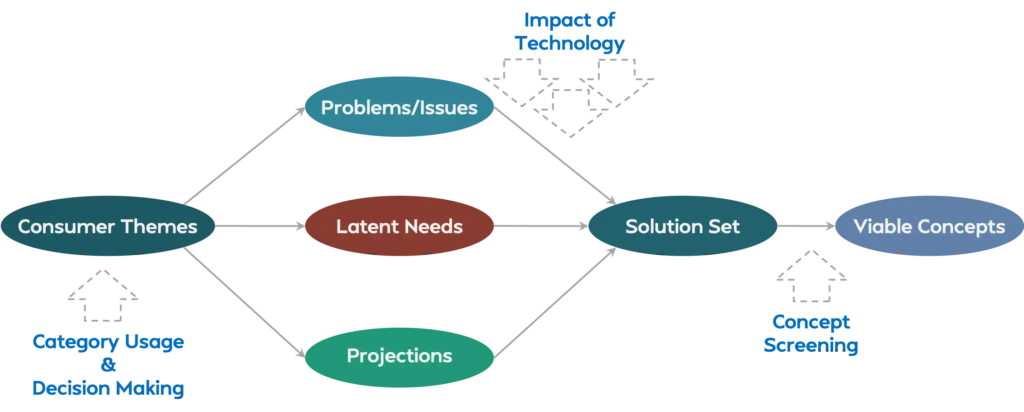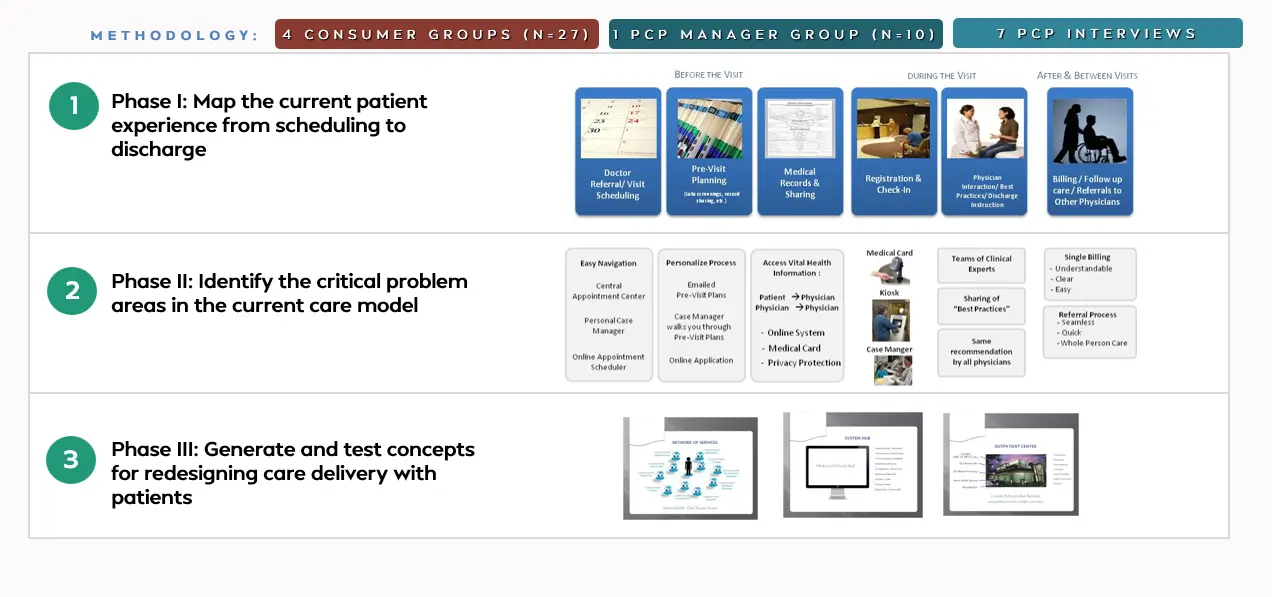The objective of the Innovation Lab is to identify new product and service concepts that add real value to the consumers. We follow a problem-based ideation process to generate useful and viable ideas that are practical and implementable.
The research follows a three-phase process: Identify Problem Set, Develop Opportunity Set, and Generate Concept Set.
The ideas and concepts generated over several groups are assembled and a final edited list is created for preliminary screening based on criteria developed in consultation with the client. An “Innovation Portfolio” of the best ideas is presented to the client as the final deliverable.


A Health System wanted to design a consumer app to help patients find physicians. The physician finder tool/app must offer four key benefits:




Setup:
After the initial briefing on the semi-functional prototype, the participant wears eye-tracking glasses to do a search on an 8-inch tablet (iPad or Android).
In this session, participants are directed to do different tasks varying in complexity.
Participants are told that they must complete the task using the app, plus they can ask for additional “pages” of information from the research assistant in the room. The research assistant will provide additional information requested on pre-designed paper cards or manually sketched pages.
The Eye Tracking recording of the sessions is replayed. The researcher conducts a frame-by-frame interview of both the self-browsing activity and the card activity.
The focus of the interview is on:
1.TASK COMPLEXITY
2.TASK FRAMING
3.RELEVANCE OF INFORMATION
4.ADEQUACY OF INFORMATION PROVIDED
5.UNDERSTANDING OF TERMS
6.UNDERSTANDING OF DIFFERENCES IN TILES
7.FILTER CATEGORIES
8.IMPACT OF LISTS SHOWN ON THE DECISION PROCESS
9.MISSING ELEMENTS
Finally, the researcher focuses the discussions on the overall utility of the tool, what express needs and motives it satisfies, how the tool is likely to be used, what emotional and psychological gratifications it provides, etc.
The researcher also tries to understand how the tool impacts the brand’s image.

Android or iOS tablet tethered to a remote monitor wirelessly or wired for observing the session in real time.

Mobile eye tracker with recorder and remote viewer

Multiple ceiling mounted cameras and overhead cameras to capture card activity and room
Project: Assess Effectiveness of an Interactive Point of Sale Software for a Personal Computer:
Assess effectiveness of iPOS on key metrics:
Explore potential areas of improvement in iPOS to further drive its key metrics.



